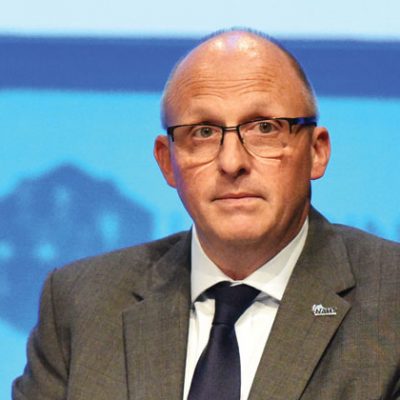State schools are almost twice as likely as private settings to have a large number of staff absent, with those in the most deprived areas the worst affected.
Polling by Teacher Tapp for the Sutton Trust found that one in five state schools reported absence rates of 10 per cent or more last Friday, compared with one in eight independent schools. Of the most deprived schools, three in 10 reported these absence levels.
Sir Peter Lampl, the Sutton Trust’s chair, said we “must do all we can to ensure that poorer pupils are not further disadvantaged as a result of this disruption”.

Schools face rising numbers of staff off with Covid
Department for Education attendance data showed the number of staff absent for Covid-related reasons rose from around 32,000 in the last week of last term to almost 60,000 last week, the highest level since September.
Paul Whiteman, general secretary of the NAHT school leaders’ union, said the disruption was significant. “The concern is that the situation could worsen over the coming weeks,” he added.
Pupil absence also reached its highest level this academic year, with 315,000 pupils, or around 3.9 per cent, off because of Covid.

The Sutton Trust found that a quarter of state schools did not have enough cover teachers, while 28 per cent had used non-teaching staff. Eight per cent said they were combining classes, a method recently suggested by the DfE.
Around a quarter of teachers said they had prepared material for online learning this week. But a fifth of all schools reported that one in 10 pupils did not have access to an electronic device. Around 7 per cent said more than a third of pupils did not have adequate access.
The online resource Oak National Academy had 340,000 users last week, its highest number since March last year when schools were closed.
Large spike in staff off with Covid
DfE attendance data shows that most staff off for Covid reasons have tested positive. Around 20,000 teachers and school leaders and 27,000 teaching assistants and other staff were at home with a confirmed case on January 6.
The proportion of support staff off for this reason rose by 160 per cent between December and last week, while the proportion of teachers and leaders absent increased by 81 per cent.
Meanwhile the Office for National Statistics said the education sector had seen the biggest month-on-month increase in the proportion of people reporting that they were suffering the effects of long Covid.
The number of pupils at home with a positive case has also grown. Of those absent for Covid-related reasons last week, 159,000 were off with a confirmed case, up 43 per cent on the 111,000 absences for this reason on December 16.
While absence due to suspected Covid or because of attendance restrictions fell, there was a large rise in the number of pupils required to stay at home and isolate – from 8,000 in mid-December to 21,000 on January 6.

Hopes of Christmas firebreak ‘evaporated’
Geoff Barton, leader of the ASCL leadership union, said any hope that the Christmas holidays would act as a firebreak for schools had “evaporated”, with schools now under “severe pressure”.
The DfE has published a regional breakdown of attendance at the end of last term. It shows that Covid-related absence among pupils was highest in London at 5.1 per cent, more than double the rate of 2.4 per cent the previous week.
The North-East and Yorkshire and the Humber had the lowest Covid absence rates of 2.6 per cent.
On December 16, 1.4 per cent of primary pupils were absent due to Covid in Sunderland, compared with 11.8 per cent in Harrow, north London.
At secondary level, absence rates ranged from 0.9 per cent in Kirklees, West Yorkshire, to 13.4 per cent in Hillingdon, north-west London.
Children’s commissioner Dame Rachel de Souza told MPs she was pressing the government to provide “live” attendance data. This week’s data release was the first in almost a month.















Your thoughts